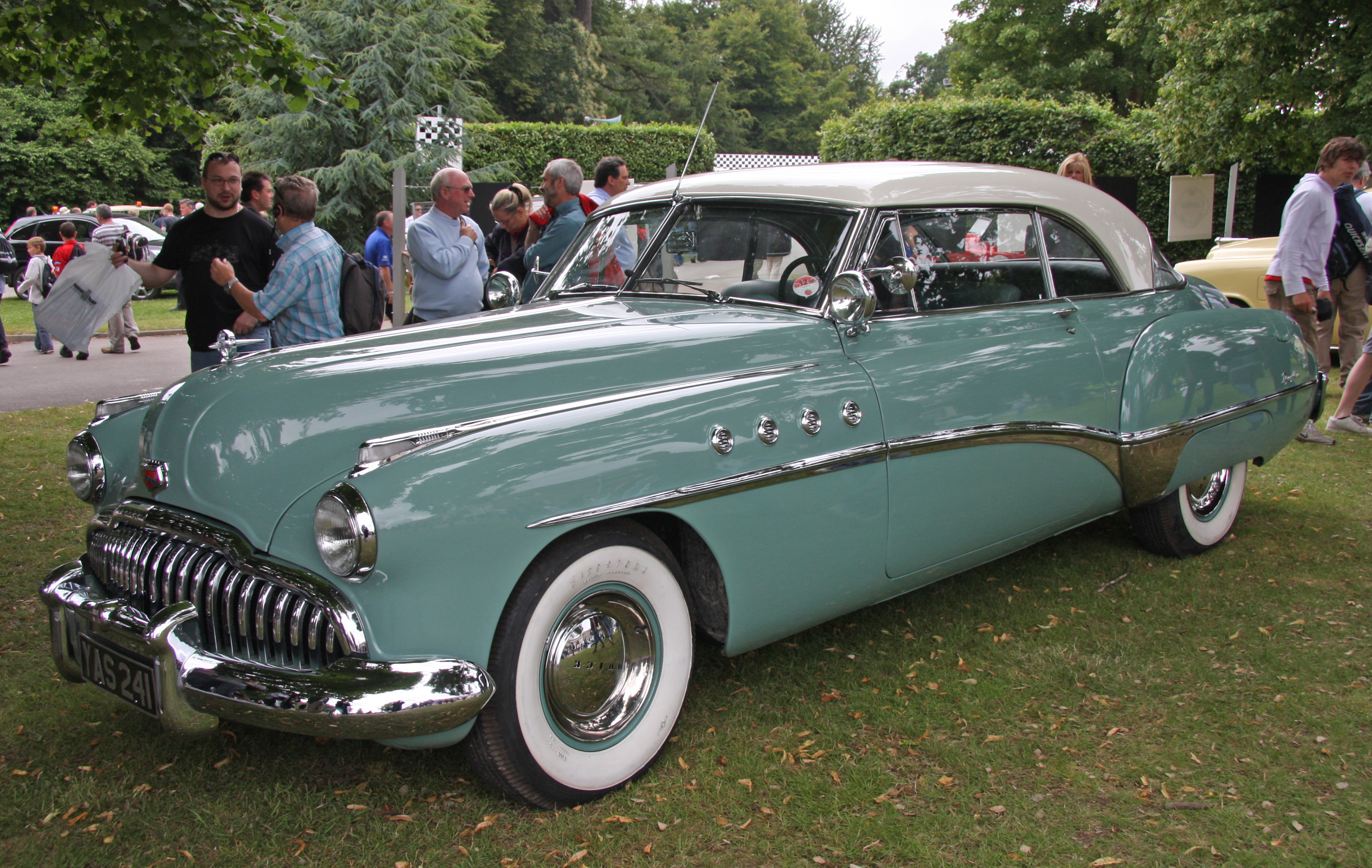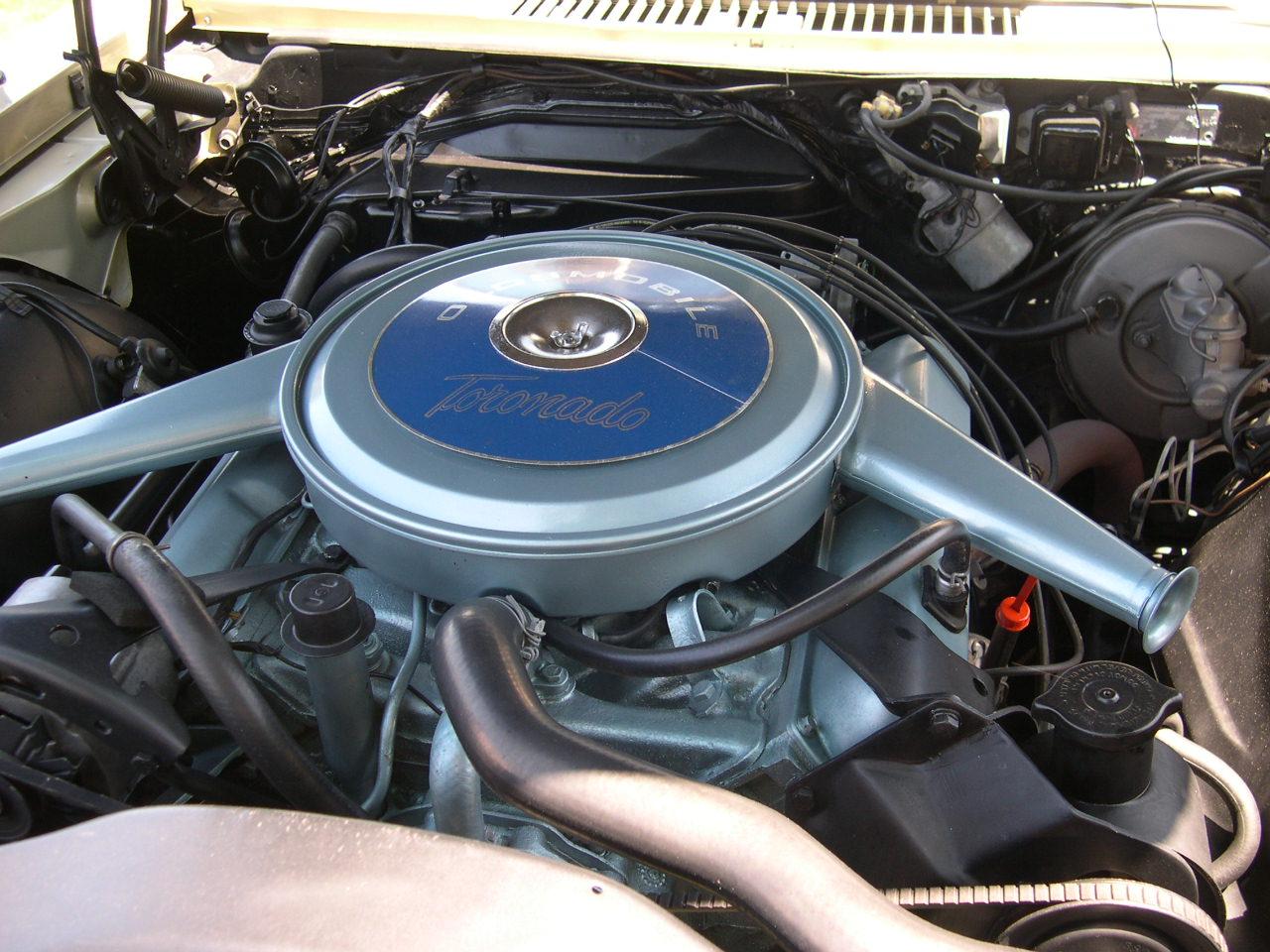|
General Motors E Platform
The General Motors E platform or E-body was the automobile platform designation used for a number of personal luxury cars produced from 1963 to 2002. Notably, early E-bodies were produced in both front wheel drive and rear wheel drive configurations, and were the first front wheel drive automobiles produced in the United States since 1937. The initial front-wheel drive E-platform power plant was referred to as the Unitized Power Package (UPP). E-bodies were re-engineered to a smaller size in 1979, gaining a relationship to the FWD K-platform used in the Cadillac Seville. Later, the cars were made smaller still with the 1986 redesign, along with the K-body. Most 1986–1993 E-bodies were produced at GM's high-tech Detroit/Hamtramck Assembly plant, with the Buick Reatta being built at the Lansing Craft Centre—then known as the Reatta Craft Centre. GM used the E-body designation until the Cadillac Eldorado ceased production in 2002. The E-body was used as the basis for the ... [...More Info...] [...Related Items...] OR: [Wikipedia] [Google] [Baidu] |
GM V Platform (FWD)
The V platform, or V-body, automobile platform designation was used by General Motors for the Cadillac Allanté halo car. It was a shortened version of the E-body used in the Buick Riviera, Buick Reatta, Oldsmobile Toronado, and Cadillac Eldorado. The Allanté was a personal luxury car, partially built in Italy and sold in limited numbers. General Motors also used the GM V platform (1966) designation for unrelated global sedans. Application: * 1987–1993 Cadillac Allanté The Cadillac Allanté is a two-door, two-seater luxury roadster marketed by Cadillac from 1987 until 1993. It used a Cadillac chassis and running gear with a body built in Italy by coachbuilder Pininfarina. It was expensive to produce with ... — 99.4 in (2525 mm) wheelbase, front-wheel drive {{General Motors platforms V 2 ... [...More Info...] [...Related Items...] OR: [Wikipedia] [Google] [Baidu] |
Cadillac Eldorado
The Cadillac Eldorado is a luxury car manufactured and marketed by Cadillac from 1952 until 2002 over twelve generations. The Eldorado was at or near the top of the Cadillac line. The original 1953 Eldorado convertible and the Eldorado Brougham models of 1957–1960 had distinct bodyshells and were the most expensive models that Cadillac offered those years. The Eldorado was never less than second in price after the Cadillac Series 75 limousine until 1966. Starting in 1967 the Eldorado retained its premium position in the Cadillac price structure, but was manufactured in high volumes on a unique, two-door personal luxury car platform. The Eldorado carried the Fleetwood designation from 1965 through 1972, and was a modern revival of the pre-war Cadillac V-12 and Cadillac V-16 roadsters and convertibles. It was the first Cadillac model to use a nameplate instead of previous Series model descriptions. Name The nameplate ''Eldorado'' is a contraction of two Spanish words t ... [...More Info...] [...Related Items...] OR: [Wikipedia] [Google] [Baidu] |
Transverse Engine
A transverse engine is an engine mounted in a vehicle so that the engine's crankshaft axis is perpendicular to the direction of travel. Many modern front-wheel drive vehicles use this engine mounting configuration. Most rear-wheel drive vehicles use a longitudinal engine configuration, where the engine's crankshaft axis is parallel with the direction of travel, except for some Mid-engine design, rear-mid engine vehicles, which use a transverse engine and transaxle mounted in the rear instead of the front. Despite typically being used in light vehicles, it is not restricted to such designs and has also been used on Armoured fighting vehicle, armoured fighting vehicles to save interior space. History The Critchley Light car, Critchley light car, made by the Daimler Company, Daimler Motor Company in 1899, had a transverse engine with belt drive to the rear axle. The first successful transverse-engine cars were the two-cylinder DKW F1 series of cars, which first appeared in 1931. Du ... [...More Info...] [...Related Items...] OR: [Wikipedia] [Google] [Baidu] |
Longitudinal Engine
In automotive engineering, a longitudinal engine is an internal combustion engine in which the crankshaft is oriented along the long axis of the vehicle, front to back. Use This type of motor is usually used for rear-wheel drive cars, except for some Audi and SAAB models equipped with longitudinal engines in front wheel drive. In front-wheel drive cars a transverse engine is usually used. Trucks often have longitudinal engines with rear-wheel drive. For motorcycles, the use of a particular type depends on the drive: in case of a chain or belt drive a transverse engine is usually used, and with shaft drives a longitudinal engine. Longitudinal engines in motorcycles do have one disadvantage: the "tipping point" of the crankshaft tilts along the entire motorcycle to a greater or lesser degree when accelerating. This is partly resolved by having other components, such as the generator and the gearbox, rotate in the opposite direction to the crankshaft. Most larger, "premium" ve ... [...More Info...] [...Related Items...] OR: [Wikipedia] [Google] [Baidu] |
FF Layout
In automotive design, a front-engine, front-wheel-drive (FWD) layout, or FF layout, places both the internal combustion engine and driven roadwheels at the front of the vehicle. Usage implications Historically, this designation was used regardless of whether the entire engine was behind the front axle line. In recent times, the manufacturers of some cars have added to the designation with the term '' front-mid'' which describes a car in which the engine is in front of the passenger compartment but behind the front axle. The engine positions of most pre– World-War-II cars are ''front-mid'' or on the front axle. This layout is the most traditional form and remains a popular, practical design. The engine, which takes up a great deal of space, is packaged in a location passengers and luggage typically would not use. The main deficit is weight distribution—the heaviest component is at one end of the vehicle. Car handling is not ideal, but usually predictable. In contrast wi ... [...More Info...] [...Related Items...] OR: [Wikipedia] [Google] [Baidu] |
FR Layout
In automotive design, a FR, or front-engine, rear-wheel-drive layout is one where the Internal combustion engine, engine is Front-engine design, located at the front of the vehicle and rear-wheel-drive, driven wheels are located at the rear via a drive shaft. This was the traditional automobile layout for most of the 20th century. Modern designs commonly use the front-engine, front-wheel-drive layout (FF). It is also used in high-floor Bus, buses and School bus, school buses. Front mid-engine, rear-wheel-drive layout In automotive design, a front mid-engine, rear-wheel-drive layout (FMR) is one that places the internal combustion engine, engine in the front, with the rear wheels of vehicle being driven. In contrast to the front-engine, rear-wheel-drive layout (FR), the engine is pushed back far enough that its center of mass is to the rear of the front axle. This aids in weight distribution and reduces the moment of inertia, improving the vehicle's car handling, handling. The me ... [...More Info...] [...Related Items...] OR: [Wikipedia] [Google] [Baidu] |
Buick Riviera
The Buick Riviera is a personal luxury car that was marketed by Buick from 1963 to 1999, with the exception of the 1994 model year. As General Motors' first entry into the personal luxury car market segment, the Riviera was highly praised by automotive journalists upon its high-profile debut. It was a ground-up design on a new GM E platform debuting for the 1963 model year and was also Buick's first unique Riviera model. Unlike its subsequent GM E platform stablemates, the Oldsmobile Toronado and Cadillac Eldorado, the Riviera was initially a front engine/rear-wheel drive platform, switching to front-wheel drive starting with the 1979 model year. While the early models stayed close to their original form, eight subsequent generations varied substantially in size and styling. A total of 1,127,261 Rivieras were produced. The Riviera name was resurrected for two concept cars that were displayed at auto shows in 2007 and in 2013. Origins The Riviera name The name ''Riviera'', ... [...More Info...] [...Related Items...] OR: [Wikipedia] [Google] [Baidu] |
Jetway 707
The Oldsmobile Toronado is a personal luxury car manufactured and marketed by the Oldsmobile division of General Motors from 1966 to 1992 over four generations. The Toronado was noted for its transaxle version of GM's Turbo-Hydramatic transmission, making it the first U.S.-produced front-wheel drive automobile since the demise of the Cord 810/812 in 1937. Sharing the GM E platform introduced by the rear-wheel drive Buick Riviera in 1963 and adopted for the front-wheel drive 1967 Cadillac Eldorado, the three models shared the E platform for most of the Toronado's 26-year history. The name "Toronado" had no prior meaning and was originally selected for a 1963 Chevrolet show car. First generation (1966–1970) The Toronado began as a design painting by Oldsmobile stylist David North in 1962. His "Flame Red Car" was a compact sports/personal car never intended for production. A few weeks after the design was finished, however, Oldsmobile division was informed it would be permitt ... [...More Info...] [...Related Items...] OR: [Wikipedia] [Google] [Baidu] |
GMC Motorhome
The GMC Motorhome is a recreational vehicle that was manufactured by the GMC Truck & Coach Division of General Motors for model years 1973–1978 in Pontiac, Michigan, USA — as the only complete motorhome built by a major auto/truck manufacturer. Manufactured in lengths, the design was noted for its front-wheel drive and its low profile, fully integrated body. In contrast to most motorhomes which were manufactured on drivetrain-equipped frames supplied by a chassis manufacturer; GMC designed, engineered, and built the entire vehicle, and in most cases the interiors, completely in-house. Empty shells were also supplied to other RV manufacturers for interior outfitting and to specialty manufacturers for custom outfitting, ranging from mail delivery and mobile training facilities to people movers and ambulances. Design and specifications Industry rumors had been circulating for some time that GM was going to build a motorhome. On February 7, 1972, it was made official. About th ... [...More Info...] [...Related Items...] OR: [Wikipedia] [Google] [Baidu] |

.jpg)



